Seven Questions Over Breakfast with David Small
 June 25th, 2008 by Eisha and Jules
June 25th, 2008 by Eisha and Jules
 You’d think we’d be pretty blasé about this kind of thing by now. I mean, we’ve been lucky enough to have interviewed a lot of cool, brilliant, amazing people over the past two years. You’d think we’d be all: “Ho hum, here’s yet another person with more talent in his little pinky finger than we’ll ever hope to have in our entire bodies. *Yawn.* Whatever.”
You’d think we’d be pretty blasé about this kind of thing by now. I mean, we’ve been lucky enough to have interviewed a lot of cool, brilliant, amazing people over the past two years. You’d think we’d be all: “Ho hum, here’s yet another person with more talent in his little pinky finger than we’ll ever hope to have in our entire bodies. *Yawn.* Whatever.”
But no. It’s always a thrill when someone we admire is willing to cyber-hang with us. And we’re pretty much gobsmacked over this one.
Today, we’re talking with David Small. Yes, the David Small. We are just a teensy bit in love with him. But then, who isn’t? Eisha can date her crush to the first time she read Imogene’s Antlers, wa-a-a-ay back in her early children’s librarian days. That spread where Imogene is wearing doughnuts on her antlers to feed the birds pretty much knocked her flat. And it only got better with each successive book: David’s ability to convey everything you need to know about a character and exactly what he/she is thinking and feeling at a given moment is uncanny. Take a look at the gentle social satire evoked by Miss McGillicuddy’s long-suffering expressions in The Money Tree; the surreal hilarity of those bovine troublemakers in George Washington’s Cows; the irresistible charm of The Gardener; the painfully familiar heroine of The Library; the quietly luminous The Journey; the… okay, can’t-even-think-about-this-one-without-crying perfection of The Mouse and His Child; and the sweet, subtle grace of The Friend. Just, you know, to name a few faves.
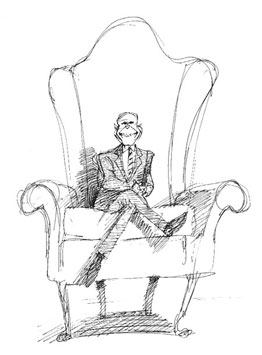 David has been making picture books since 1981. As the biography at his site states, David’s books have been translated into several languages, made into animated films and musicals, and have won many prestigious illustration awards, including the 1998 Caldecott Honor for The Gardener written by his wife, Sarah Stewart, and the 2001 Caldecott Medal for So, You Want To Be President? by Judith St. George. “To date he has illustrated over 40 picture books,” the biography closes. “At an average of 40 pages per book, that makes around 1,840 illustrations, though someone ought to check that math.”
David has been making picture books since 1981. As the biography at his site states, David’s books have been translated into several languages, made into animated films and musicals, and have won many prestigious illustration awards, including the 1998 Caldecott Honor for The Gardener written by his wife, Sarah Stewart, and the 2001 Caldecott Medal for So, You Want To Be President? by Judith St. George. “To date he has illustrated over 40 picture books,” the biography closes. “At an average of 40 pages per book, that makes around 1,840 illustrations, though someone ought to check that math.”
David has also done extensive work for national magazines and newspapers; his drawings appeared regularly in The New Yorker and The New York Times. Some examples of his editorial illustrations can be viewed here at his site. Pictured here is our Commander-in-Chief.
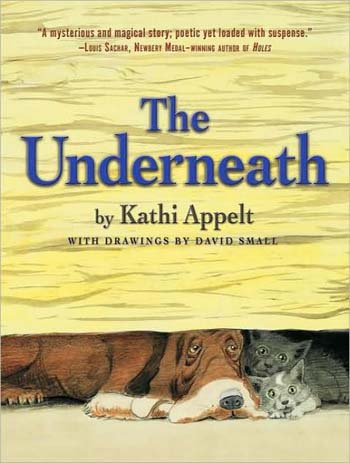 David’s most recent illustrated work is The Underneath, Kathi Appelt’s impressive debut novel (published by Atheneum Books for Young Readers in May and reviewed here at 7-Imp). The novel—which tells the story of an old hound, a calico cat, two kittens, the muddy Bayou Tartine of East Texas, a man named Gar-Face, an Alligator King, and an ancient, mystical creature trapped inside a large jar at the base of a tree, buried centuries ago—is a wonder, at turns magical and mysterious, and Appelt’s prose mesmerizing.
David’s most recent illustrated work is The Underneath, Kathi Appelt’s impressive debut novel (published by Atheneum Books for Young Readers in May and reviewed here at 7-Imp). The novel—which tells the story of an old hound, a calico cat, two kittens, the muddy Bayou Tartine of East Texas, a man named Gar-Face, an Alligator King, and an ancient, mystical creature trapped inside a large jar at the base of a tree, buried centuries ago—is a wonder, at turns magical and mysterious, and Appelt’s prose mesmerizing.
We asked David what it was like to read the novel for the first time and if he could talk a bit about creating the illustrations for it.
“I was amazed by the twists and turns of the story,” he said, “by the range of characters, both animal and human, and by the tone of mournful, nostalgic poetry in the prose. My biggest problem illustrating it was in keeping those kittens from looking too adorable. (This was not the Disney version.) Also, what to do with Gar Face’s horrible face? I decided the best thing to do was not to show it, which led me to use some camera angles I might not have considered otherwise.”
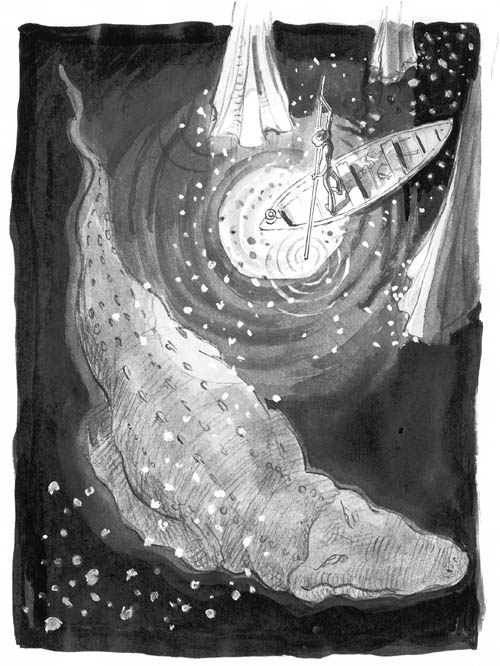
While we’re setting the table for David’s breakfast-of-choice—“Strong coffee. Oatmeal. Cranberry juice.”—let’s ask him about some of the basics:
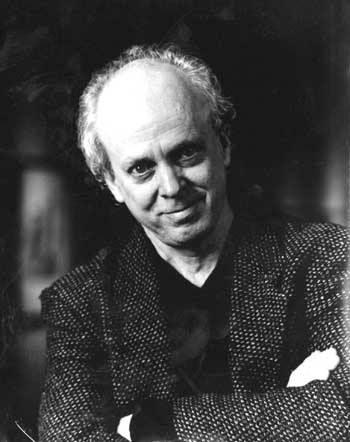 7-Imp: Are you an illustrator or author/illustrator?
7-Imp: Are you an illustrator or author/illustrator?
David {pictured here, the year he won the Caldecott}: I do both, but more on the visual end.
7-Imp: Can you list your books-to-date?
{Ed. Note: David offered to send a complete list of his published titles, but he’s already made it easy for readers by listing them at his web site. Simply go here, and you’ll be able to further click on a list of all his books; books he wrote and illustrated; books written by his wife, Sarah Stewart, and illustrated by him; and books he has illustrated. “My very latest picture books,” he added, “are When Dinosaurs Came With Everything (Elise Broach, Atheneum 2007); Once Upon a Banana (Jennifer Armstrong, S&S 2006); {and} The Friend (Sarah Stewart, FS&G).”}
7-Imp: What is your usual medium, or––if you use a variety––your preferred one?
David: I use a sheet of good imported rag paper. My line work is done with brush & ink, sometimes a nib pen. I add watercolor washes with touches of pastel chalk.
7-Imp: If you have illustrated for various age ranges (such as, both picture books and early reader books OR, say, picture books and chapter books), can you briefly discuss the differences, if any, in illustrating for one age group to another?
David: I’ve never made an early-reader book. I’m not sensitive to that genre. I’ve illustrated about forty-five picture books and two novels. I liked doing the novels very much, but it seemed almost too easy. The demands of the picture book are great. You have to retell the entire story in purely visual terms. In a novel, one just sort of swoops in with a picture occasionally, and I felt I was getting away with something.
(Atheneum Books for Young Readers, 2008)
7-Imp: Where are your stompin’ grounds?
David: We live in an historic house built in 1833 on the St. Joseph River, in Michigan. The nearby village has a population of nine-hundred, more or less. My studio is in a 1890 farmhouse, the next house down the road. My walk to work is a three-minute stroll along some old sheep paths on the riverbank. {The second picture here is} an aerial shot of the home, orchard, and prairie meadow with walking paths cut through it. {The last is} another aerial shot, this one of Sarah’s garden where she grows flowers, veggies, herbs, grapes and other things.
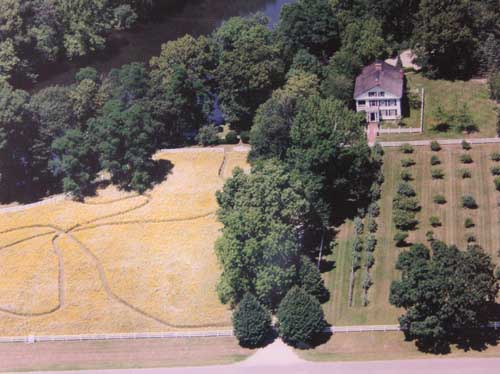
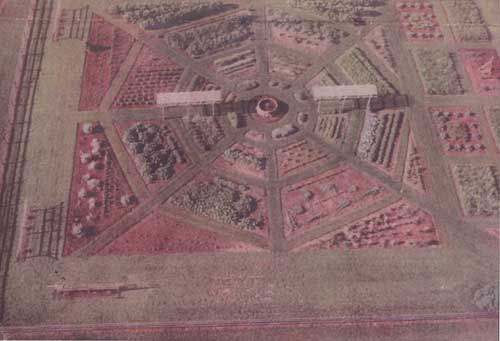
7-Imp: Can you briefly tell us about your road to publication?
David: I was teaching art in a college when, on a whim, I wrote my first picture book. That year, on my quarter off, just out of curiosity and to see what would happen, we went to New York, lived in a friend’s empty apartment, and for a month I went from publisher to publisher with my portfolio of drawings and my single manuscript. I saw at least twenty publishers. Everyone was encouraging but didn’t seem to me to be particularly interested. Then, a few weeks after we came home, an editor at [the former] Macmillan called to say they wanted to buy my book. The next day, Farrar Straus & Giroux called and I had to tell them I’d already sold it.
That was a different publishing world then, a much more discriminating one, where the children’s book division of a company might produce six titles a year, instead of today’s huge lists.
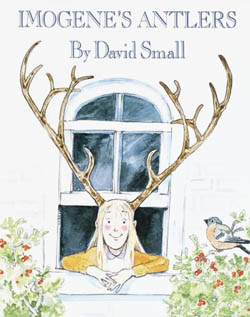 The world of children’s book publishing moves like molasses (this is generally still true, although nowadays, with digital aids, they can crank out a book much faster), and it’s important to keep in mind that in publishing, just as in love, you can’t correctly interpret silence and reticence. Sometimes it means they have no feeling for you and sometimes exactly the opposite.
The world of children’s book publishing moves like molasses (this is generally still true, although nowadays, with digital aids, they can crank out a book much faster), and it’s important to keep in mind that in publishing, just as in love, you can’t correctly interpret silence and reticence. Sometimes it means they have no feeling for you and sometimes exactly the opposite.
That was in 1980. I soon learned that having only one book didn’t make an instant career, so I did another, then another. During the recession of the ’80s, when my teaching position was eliminated, I continued making books (a little faster now) and also worked as an editorial artist for national magazines and newspapers. I had done, I think, ten picture books before one of them (Imogene’s Antlers) hit it big and even then I didn’t understand what was happening, I never considered having an agent, never thought about how much money I made, didn’t care. I was just so grateful to be scraping together a living as an artist and glad that I had fallen into illustration, because it felt natural.
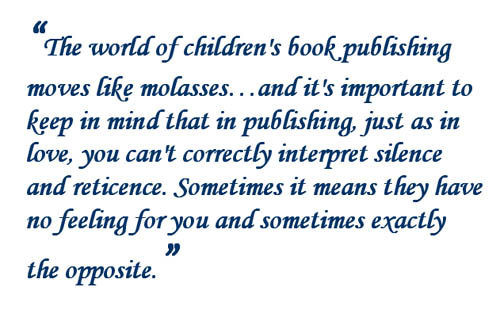
7-Imp: Can you please point us to your web site and/or blog?
David: davidsmallbooks.com.
7-Imp: If you do school visits, can you tell us what they’re like?
 David: Sarah {pictured here} and I have made school visits for decades and we enjoy it.
David: Sarah {pictured here} and I have made school visits for decades and we enjoy it.
Steve Kellogg was a big help in getting me started from the performing aspect. Steve advised me to work up my act, memorize it, rehearse it, and repeat it wherever I went. That way you don’t kill yourself trying to improvise something entirely new every time you go onstage. Of course you can always add, subtract, modify, or improvise whenever you want to, but with that method you always have a solid base to stand on, much of the stress disappears, and you can relax and get to know your hosts between shows.
7-Imp: If you teach illustration, by chance, tell us how that influences your work as an illustrator.
David: I taught Illustration twice at a university, which made a dreadful mistake in letting students take that class without any background in Drawing, Life Drawing, or Design. My task was, therefore, impossible and the results predictably execrable. On the other hand, I loved teaching Life Drawing, including Anatomy. Those long frequent sessions with the model and the skeleton had the most powerful influence on my work as an illustrator. (I used to draw along with the class at the extracurricular model sessions.) I’m not even certain now that Illustration can be taught. It’s like trying to teach someone how to be smart or witty. If you are, you are. If not, not.
7-Imp: Any new titles/projects you might be working on now that you can tell us about?
David: I’m at work on the book of my life, literally. Stitches is a graphic memoir about my problematic youth. I hope it won’t be too much of a doorstop. It’s somewhere around three hundred pages long at the moment and is just about in its final dummy/draft. W.W. Norton will publish {in} Fall 2009. I’m on the verge of starting the final art right now.
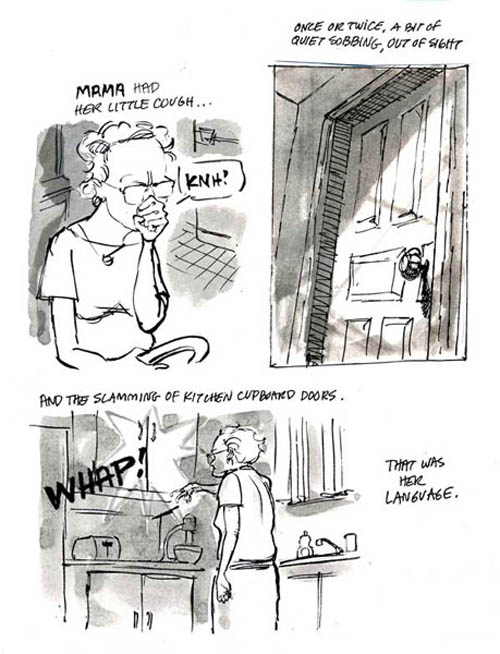
 Okay, the table’s set, and we’re ready to sit down and talk more specifics over our coffee and oatmeal (seven-minus-one questions over breakfast, since he opted out of the last question). And we’ll try not to talk with our mouths full.
Okay, the table’s set, and we’re ready to sit down and talk more specifics over our coffee and oatmeal (seven-minus-one questions over breakfast, since he opted out of the last question). And we’ll try not to talk with our mouths full.
1. 7-Imp: What exactly is your process when you are illustrating a book? You can start wherever you’d like when answering: getting initial ideas, starting to illustrate, or even what it’s like under deadline, etc. Do you outline a great deal of the book before you illustrate or just let your muse lead you on and see where you end up?
David: With the first dummy, I generally follow the wise advice of animator Chuck Jones and start by sketching the scenes that interest me most.
I enjoy a lot of give-and-take with my art directors and editors, and, since I write a bit myself, I’m shamelessly free with my comments on the text, especially when I feel it’s repeating something the pictures can say as well or better. (How much of this ever gets back to the authors, I have no idea, but if it does, I imagine it’s all put very discreetly.)

2. 7-Imp: Describe your studio or usual work space for us.
David: I have a high-ceilinged room with windows around two sides, which give a view of the river and of many big old trees. Generally, the shutters are closed over this scene, as I work at a light box. In that twilit cave, I’m surrounded by books, CDs, and stereo equipment, cabinets full of paper and art supplies, and a large corkboard on which I can tack up the drawings for a full book, so that I can see it all at once.
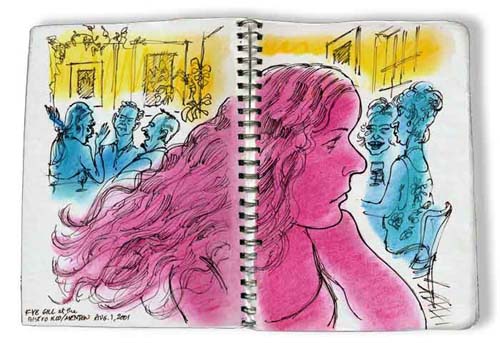
3. 7-Imp: As book lovers, it interests us: What books or authors and/or illustrators influenced you as an early reader?
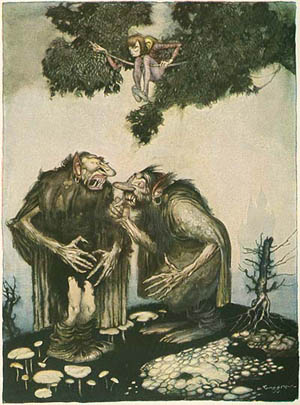 David: We didn’t have many books in our house. I did have the usual Golden Books and—because our name was Small—all those dull Lois Lenski things about Cowboy Small, etc. Gustaf Tenggren’s work used to scare the hell out of me and I loved it. Decades later, we made a pilgrimage to his home on the coast of Maine, where, it turns out, he drank himself to death.
David: We didn’t have many books in our house. I did have the usual Golden Books and—because our name was Small—all those dull Lois Lenski things about Cowboy Small, etc. Gustaf Tenggren’s work used to scare the hell out of me and I loved it. Decades later, we made a pilgrimage to his home on the coast of Maine, where, it turns out, he drank himself to death.
{Ed. Note: Pictured here is an image from Tenggren’s 1923 edition of Grimms Fairy Tales.}
4. 7-Imp: If you could have three (living) illustrators or author/illustrators — whom you have not yet met — over for coffee or a glass of rich, red wine, whom would you choose?
David: Ronald Searle, R. Crumb, Ralph Steadman. (Searle could order the wine.)
As for dead illustrators, I’d love to meet Daumier and George Grosz.
5. 7-Imp: What is currently in rotation on your iPod or loaded in your CD player? Do you listen to music while you create books?
David: Rachel’s “Music for Egon Schiele”; Tomasz Stanko’s, “Suspended Night”; Morton Feldman’s “Violin and String Quartet” (the Christina Fong version).
All of this is autumnal music, suitable for illustrating memories (cf. my graphic book.)
6. 7-Imp: What’s one thing that most people don’t know about you?
David: I’m a math idiot.
7-Imp: What profession other than your own would you like to attempt?
David: I already have my dream job.
7-Imp: What profession would you not like to do?
David: Dry-cleaning.
7-Imp: If Heaven exists, what would you like to hear God say when you arrive at the Pearly Gates?
David: “Good boy! ”
Dog/kittens and alligator images from THE UNDERNEATH by Kathi Appelt, illustration © 2008 by David Small, posted by permission of Simon & Schuster. All rights reserved.
All other art work used with permission of the illustrator.

On a children’s book writers’ listserve we have been discussing the waiting period when authors try by various divining rods to figure out what editors are thinking. In this wonderful interview, David has put his finger on the secondary problem. Even when we hear from the editors, we are still left wondering.
Thanks, David, not only for your glorious books, but for the wisdom in this: “in publishing, just as in love, you can’t correctly interpret silence and reticence. Sometimes it means they have no feeling for you and sometimes exactly the opposite.”
Jane Yolen
Fabulous interview, and AMEN to that quote about editors and reticence! Like Eisha, Imogene’s Antlers made me a lifelong DS fan. What a gorgeous estate!
Oh, that image from his forthcoming memoir–wow. How do you bring a person–a real-live person–to life so immediately like that? Can’t wait to read/look at The Underneath. Just put it on reserve at my library.
Thanks, you guys!
Thank you for this amazing interview.
When I learned that David Small was going to do the art for THE UNDERNEATH, I felt this breath of air encircle the book, and it seems to me that that’s exactly what he did–encircled it. His art gave it air. I can’t it explain it any better than that.
Kathi
Wow. What a fantastic interview. I loved reading it from beginning to end. Thanks, Jules and Eisha.
Thanks for a great interview!
“…in publishing, just as in love, you can’t correctly interpret silence and reticence. Sometimes it means they have no feeling for you and sometimes exactly the opposite.”
What an enlightening quote. Obviously, not just to us trying to break into the field, but to those who have spent their lives plowing through.
gail
PS. Now that’s what I call a garden!
Fantastic interview — Imogene’s Antlers was my very favorite book growing up (the first book I picked out all by myself at the elementary school book fair), and it still has its special spot on my bookshelf. David Small’s work was certainly one of the reasons I gravitated toward the children’s book illustration world – very inspiring to me! Can’t wait to see that memoir!!!
Thanks to Eisha and Jules for providing an illuminating glimpse into the life of a man I’ve known many years, but am continually surprised and amazed by–especially when it comes to his art. David’s craft is a singular enterprise that he, and only he, will ever truly understand–and that, my friends, is all right with me as long as he continues to populate this sometimes difficult world with artistic escape.
Gobsmacked is the best word i’ve read in eleventy-ten years – thank you.
and thank you Mr. Small for sharing your insides with us.
[…] David Small (interviewed June 25): “I’ve illustrated about forty-five picture books and two novels. I liked doing the […]
i know your books im trying to get ideas from your drawings your picture a re beautiful thatnks for being a illustrator
[…] to make it work in her favor in the end. Hoyt’s watercolors are warm and expressive. Fans of David Small’s art work will sense a similar vibe and style, and Hoyt gets to have lots of fun—as I’m […]
[…] year, Caldecott-Medal winner David Small was here for seven questions over breakfast, and he mentioned Stitches as one of his forthcoming titles, sharing this sketch here at that time […]
[…] she said: “He brought them to life in a million ways.” Small has also praised Appelt. “I was amazed by the twists and turns of the story,” he has said of The Underneath, “by the range of characters, both animal and human, and by the […]
Dear David: I took a drawing class with you at Suny Fredonia in 1978. We drew egg shells in one class, my coment was crushed shells. Hope your well
[…] you’re a fan of author/illustrator David Small’s work, then you’re having a good year. I decided to check in with him this morning to see what […]
[…] was very fortunate to study under David Small when I was a Fine Arts major at Kalamazoo College back in the mid-1980s. Indeed, I was one of the […]
[…] http://blaine.org/sevenimpossiblethings/?p=1328 […]
[…] Buzzeo’s One Cool Friend, illustrated by Caldecott medalist David Small, was released by Dial in early January. I am loathe to ruin the ending for you before you read it […]
You completed a few fine points there. I did a search on the matter and found a good number of folks will consent with your blog.
[…] I’ll also have a Q & A with Sarah Stewart and David Small within the next month, as well as a post that shows many of David’s early sketches for The […]
[…] the early versions—the sketches, the doodles, the brainstorms—of author/illustrator David Small’s illustrations are splendid. Above is one from his latest illustrated title, Sarah Stewart’s […]
[…] that link, and below are more illustrations from the book. (Did you all see author/illustrator David Small’s thoughts on I’m Bored over at the New York Times in September? That is […]
[…] might be able to tell who my influences are. Some great storytellers to me are David Small, Quentin Blake, Kazu Kibuishi, Hayao Miyazaki, Roald Dahl and Leo […]
[…] and writers I greatly admire are David Lucas, Jon Agee, Tove Jansson, David Small, John Burningham, and of course all things William Steig, James Thurber, and Virginia Lee Burton. I […]
[…] Lynda Barry, David Small, and Shirley […]
[…] Over at BookPage, I’ve got a review here of Doreen Cronin’s Bloom, illustrated by David Small (Caitlyn Dlouhy/Atheneum, February […]